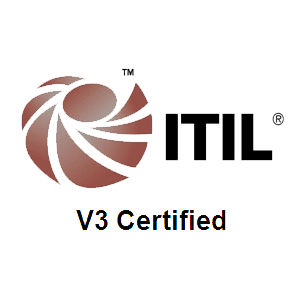In today’s hybrid and multi-cloud world, managing SQL Server instances across diverse environments can be a daunting task. Enter Azure Arc—Microsoft’s game-changing solution that brings the power of Azure to your on-premises, edge, and multi-cloud SQL Server deployments.
Azure Arc is a hybrid and multi-cloud management platform developed by Microsoft that extends Azure’s capabilities to infrastructure and services running outside of Azure. This includes on-premises data centers, edge environments, and other public clouds like AWS and Google Cloud.
🌐 Core Concept
Azure Arc enables you to project non-Azure resources into Azure, allowing you to manage them as if they were native Azure resources. This includes:
- Servers (Windows/Linux)
- Kubernetes clusters
- SQL Server instances
- Virtual machines
- Data services
Once onboarded, these resources appear in the Azure portal and can be managed using Azure tools like Azure Policy, Azure Monitor, Microsoft Defender for Cloud, and Microsoft Entra ID.
🔧 Key Capabilities
1. Unified Management
Manage all your resources—whether in Azure, on-premises, or other clouds—through a single control plane.
2. Security & Compliance
Apply consistent security policies, enable threat protection, and enforce compliance across environments.
3. DevOps & Automation
Use GitOps, CI/CD pipelines, and infrastructure-as-code tools like Terraform and Bicep to automate deployments and updates.
4. Data Services Anywhere
Deploy Azure SQL Managed Instance and PostgreSQL Hyperscale on any infrastructure using Kubernetes.
5. Inventory & Monitoring
Track resource health, performance, and configuration using Azure Monitor and Log Analytics.
🧩 How Azure Arc Works
Azure Arc uses lightweight agents and extensions to connect external resources to Azure. These agents communicate securely over HTTPS and authenticate using Microsoft Entra ID. Once connected, resources are treated as first-class citizens in Azure.
📦 Azure Arc Components
- Azure Connected Machine Agent: Connects servers to Azure.
- Azure Arc Resource Bridge: Enables VM management on non-Azure platforms.
- Azure Arc-enabled Data Services: Runs Azure SQL and PostgreSQL on Kubernetes.
- Azure Arc-enabled Kubernetes: Manages clusters across environments.
🔧 Step-by-Step Guide to Set Up Azure Arc for SQL Server
Setting up Azure Arc for SQL Server is straightforward if you follow these steps:
1. Prepare Your Environment
- Ensure your SQL Server instance is installed on a Windows or Linux machine.
- Confirm internet connectivity and outbound access to Azure (port 443).
- Install the Azure Connected Machine Agent if not already present.
2. Register the Azure Arc Data Resource Provider
- Go to Azure Portal > Subscriptions > Resource Providers.
- Search for
Microsoft.AzureArcDataand click Register.
3. Generate the Onboarding Script
- Navigate to Azure Arc > SQL Server Instances > + Add.
- Choose Connect SQL Server instances.
- Fill in details like:
- Subscription
- Resource Group
- Region
- OS and Proxy settings
- SQL Server edition and license type
- Download the generated PowerShell or Bash script.
4. Execute the Script on the Target Machine
- Run the script using admin privileges:
- Windows:
.\RegisterSqlServerArc.ps1 - Linux:
chmod +x ./RegisterSqlServerArc.sh && ./RegisterSqlServerArc.sh
- Windows:
- The script installs the Azure extension for SQL Server and registers the instance 1.
5. Validate in Azure Portal
- Go to Azure Arc > SQL Server and verify the newly registered instance.
- Configure tags, policies, and monitoring as needed.
🌟 Benefits of Azure Arc
Azure Arc offers a unified management experience across hybrid environments. Here are its top advantages:
1. Centralized Management
Manage all SQL Server instances—on-prem, cloud, or edge—from the Azure Portal
2. Enhanced Security
Integrate with Microsoft Defender for Cloud, enforce Azure Policies, and use Entra ID for secure access
3. Cost Optimization
Use pay-as-you-go licensing or extend support for legacy SQL Server versions with Extended Security Updates (ESU)
4. DevOps Integration
Enable GitOps, CI/CD pipelines, and infrastructure-as-code using tools like Terraform and Bicep
5. Scalability & Flexibility
Scale workloads across environments without sacrificing performance or compliance
⚖️ Pros and Cons of Azure Arc
✅ Pros
- Flexibility: Works across on-prem, multi-cloud, and edge 3.
- Unified Control Plane: Centralized governance and monitoring 3.
- Security & Compliance: Built-in tools for policy enforcement and threat protection 3.
- Integration: Seamless with Azure services like Monitor, Policy, and Defender 3.
❌ Cons
- Complex Setup: Initial onboarding can be intricate 3.
- Cost Management: May increase cloud bills if not optimized 3.
- Feature Parity: Some Azure features may not be fully available on Arc 3.
- Dependency on Azure Stack HCI: Limits accessibility for some organizations 3.
🌍 Real-World Use Cases
1. Financial Services
A bank running workloads on AWS, GCP, and on-premises uses Azure Arc to enforce compliance and monitor resources centrally
2. Manufacturing
Edge-powered AI with Azure Arc enables real-time quality control and predictive maintenance
3. Government & Defense
Deploys autonomous surveillance systems using Arc-enabled AI workloads for real-time decision-making
4. Retail
Uses Azure Arc to manage inventory and personalize customer experiences across distributed stores
📦 Bonus: Resources to Get Started
- Azure Arc Jumpstart: 90+ automated scenarios.
- Microsoft Learn Modules: Earn badges while learning.
- ArcBox: Fully automated lab environment.
📝 Final Thoughts
Azure Arc is not just a tool—it’s a strategic enabler for hybrid cloud transformation. By bridging the gap between on-premises infrastructure and Azure’s powerful ecosystem, it empowers organizations to innovate, scale, and secure their SQL Server environments like never before.
#AzureArc, #SQLServer, #HybridCloud, #CloudComputing, #Azure, #MicrosoftAzure, #CloudManagement, #DatabaseAdmin, #CloudSecurity, #AzureSQL, #ArcEnabledSQL, #CloudGovernance, #AzureArcSetup, #CloudIntegration, #MultiCloud, #EdgeComputing, #AzureArcBenefits, #AzureArcTutorial, #CloudOps, #DevOps, #InfrastructureAsCode, #AzureArcUseCases, #CloudStrategy, #EnterpriseIT, #CloudInnovation, #AzureArcDeployment, #CloudMonitoring, #AzureArcSecurity, #CloudAutomation, #TechBlog


